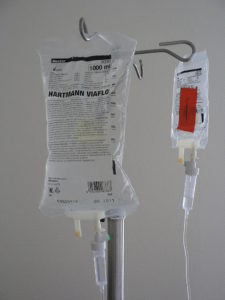Over a month after Maria: Looming challenges and small victories
More than a month after Hurricane Maria slammed into Puerto Rico, Americans continue to feel the effects of the storm. The island itself remains largely out of power, with electricity still unavailable to 75% of residents at the start of the week.
According to the Army Corps of Engineers, the island’s electric grid infrastructure includes 2,400 miles of transmission lines and 30,000 miles of distribution lines. In a press conference on Saturday, Ricardo Rossello, the Governor of Puerto Rico, outlined a goal timeline for power restoration: 30% by the end of October, 50% by November 15, and 80% by December 1. His goal is to restore power to 95% of Puerto Rico’s grid by the end of December, but admits that it will be challenging to do so.

The effects of this ongoing uncertainty are also taking a toll on the U.S. mainland. Hurricane Maria has disrupted pharmaceutical production and supply chains reaching across the country. The New York Times reported that Baxter, one of the manufacturers affected in Puerto Rico, provides over 34,000 bags of a solution used to dilute drugs administered intravenously. Production of this product stopped in the wake of Hurricane Maria – leaving the Cleveland Clinic and healthcare facilities across the country scrambling to supplement their limited supply. Almost 10% of all drugs used by Americans are produced in Puerto Rico by about 80 different firms. In remarks prepared for the House Energy and Commerce Committee, Food and Drug Administration commissioner Dr. Scott Gottlieb highlighted the continued operation limitations of many pharmaceutical companies, stating that “many firms [are] operating around 20 percent capacity.”
The FDA has coordinated supplies including generators and fuel for drug and medical device manufacturers on the island, but even companies who have had power restored continue to experience unpredictable flow of electricity to their facilities. Drug and device shortages are likely to persist long after these issues directly impacting production are resolved.
On the other hand, small signs of progress are starting to appear on the island itself. The school year finally began for some young students in Puerto Rico, who have endured the worst over the past few months. A total of 98 schools opened their doors on Tuesday, representing only 9% of Puerto Rico’s total public schools, and only a select few have electricity, let alone internet access.
Many of these schools, located in the cities of Mayaguez and San Juan, have lost out on over a month of instruction time – yet schools in more rural regions still have no indication of when they will be open. A small population of students returning to school may be a small victory, but for Puerto Rico right now, it’s one step towards normalcy.
Sources:
Five weeks after Maria most of Puerto Rico remains an island in the dark – USA Today
Puerto Rico governor plans to restore 95% of power by December – CNN
U.S. Hospitals Wrestle With Shortages of Drug Supplies Made in Puerto Rico – New York Times
Testimony of Scott Gottlieb, M.D., Commissioner of Food and Drugs – U.S. Food and Drug Administration
Some Puerto Rico Schools Reopen, Making Do Without Power – New York Times
Some schools in Puerto Rico to open for 1st time after Maria – Washington Post
[Featured image: An aerial photo captures Hurricane Maria’s devastation in Puerto Rico. Source: US Department of Defense.]
